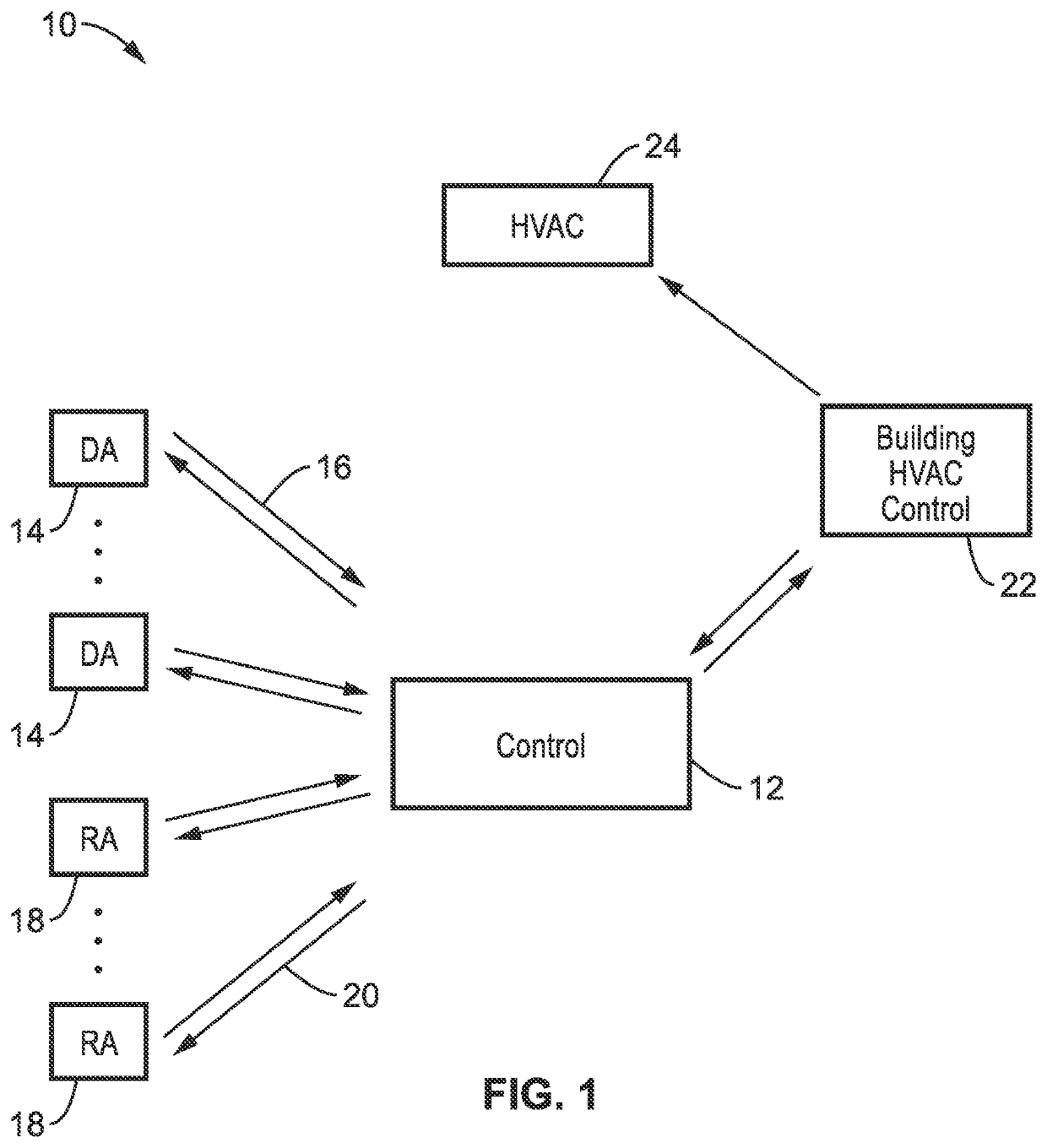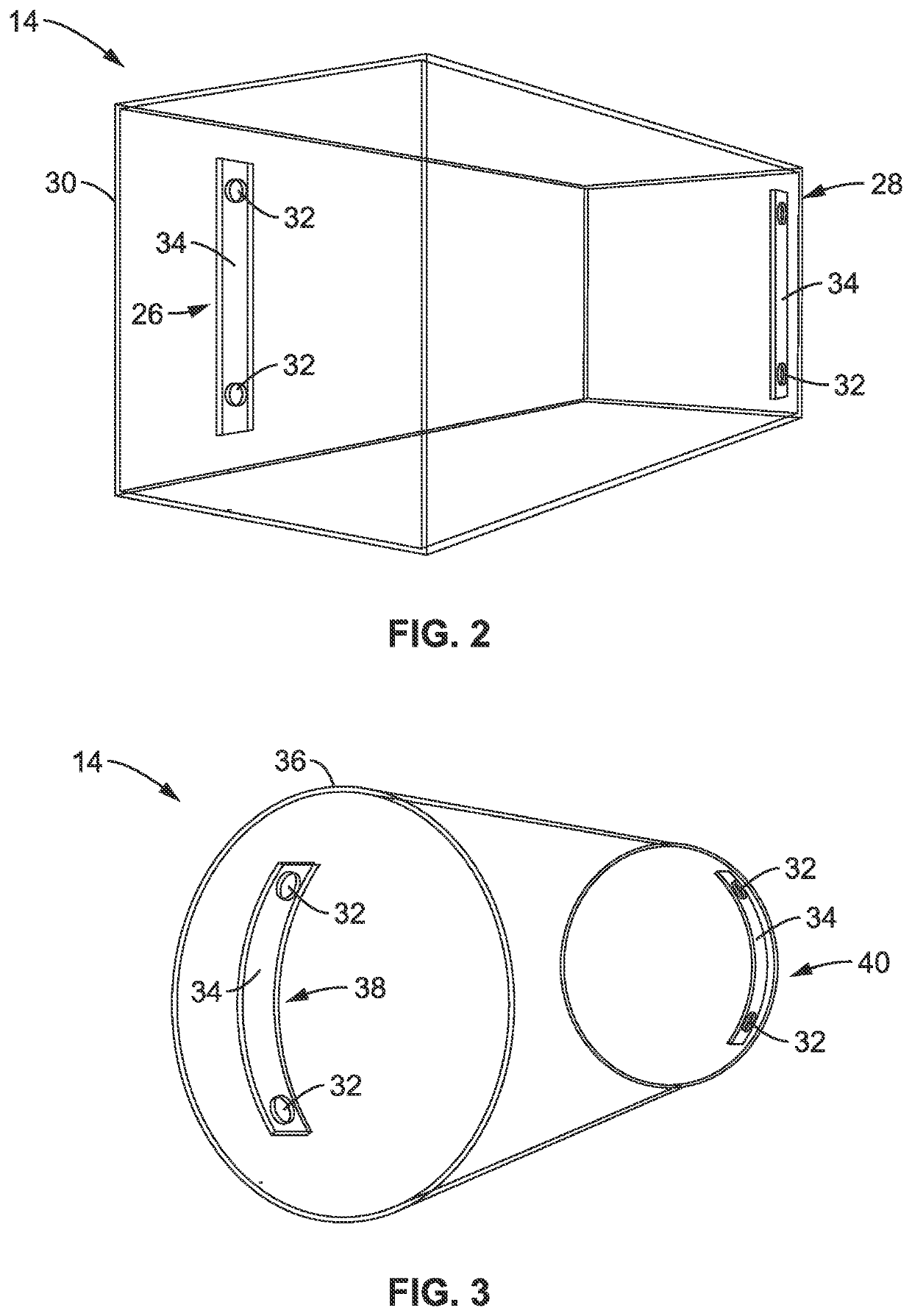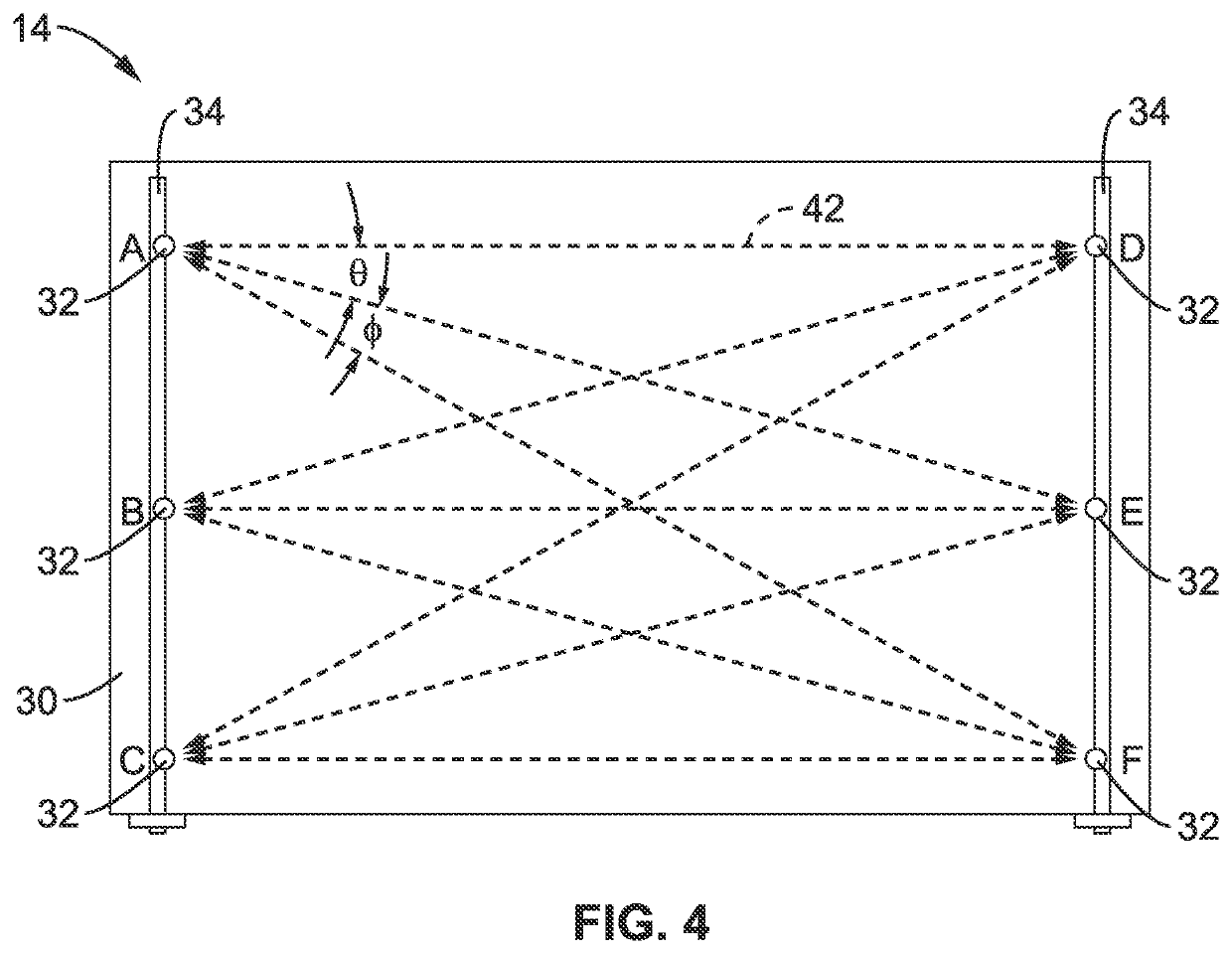Ultrasonic anemometers systems for sensing air flows in rooms and ducts
- Summary
- Abstract
- Description
- Claims
- Application Information
AI Technical Summary
Benefits of technology
Problems solved by technology
Method used
Image
Examples
example 1
[0088]To illustrate the functionality of the duct flow anemometer system, transceivers were mounted on vertical brackets on opposite sides of a square-section wind tunnel, as shown in FIG. 13. The brackets were separated by 16.5 cm and staggered at 17 degrees with respect to the direction of airflow. This was done to provide the necessary downwind distance and assure that the wake of the upwind sensor did not affect the airflow in the path between the transceivers. If one of the brackets were moved further downwind from the other bracket, the angle between the line connecting transducers and wind direction is increased and the sensor becomes more sensitive to variations in airspeeds. On the other hand, if the line connecting two transducers approaches perpendicular to the flow, the TOF and therefore airspeed become insensitive to changes in the airflow.
[0089]The transceivers used in this anemometer were miniature, ultralow power ultrasonic time-of-flight range sensor (CH101) from Ch...
example 2
[0094]To demonstrate the functionality of the room anemometer apparatus and system, an anemometer with the support structure shown in FIG. 7 was prepared and air and turbulence tested and the results compared with two conventional hotwire sensors.
[0095]The anemometers used a tetrahedral arrangement of four transceivers, the smallest number able to capture a 3-dimensional flow providing greater measurement redundancy than in existing anemometry. The sonic pathways were set along the axes of a 60 mm tetrahedron and operated in a single-pitch, three-catch arrangement. The anemometer also measured temperature and has a compass and tilt sensor so that flow direction is globally referenced regardless of anemometer orientation.
[0096]In this illustration, the length of the sound paths in the AV tetrahedron is about 6 cm (0.06 m). Distance divided by velocity gives the time of flight of the ultrasonic pulse. The speed of sound in still air is 340 m / s. To this one must add or subtract the vel...
example 3
[0113]The ability to accurate measure air movement has been difficult and is expensive over extended periods of time, especially for velocities below 1 m / s. To increase the limited air velocity range possible in high frequency phase-based ultrasonic anemometers, new time-of-flight calculation methods that surpass the half-cycle limit in existing phase-based calculations were evaluated. Three approaches were tested to extend the range. The methods were validated in a very high frequency anemometer using MEMS ultrasonic transceivers containing an AlN piezoelectric micromachined ultrasound transceiver. The results demonstrated a high goodness of fit (average room mean square of 0.1294 m / s and the average mean absolute error of 0.0542 m / s) for capturing actual air velocities in the experimental setup. With a filter rate of 15 frame lengths in the filter, an absolute error of 0.0263 m / s was calculated, surpassing the sensitivity of many current commercially available products.
[0114]To in...
PUM
 Login to View More
Login to View More Abstract
Description
Claims
Application Information
 Login to View More
Login to View More - R&D
- Intellectual Property
- Life Sciences
- Materials
- Tech Scout
- Unparalleled Data Quality
- Higher Quality Content
- 60% Fewer Hallucinations
Browse by: Latest US Patents, China's latest patents, Technical Efficacy Thesaurus, Application Domain, Technology Topic, Popular Technical Reports.
© 2025 PatSnap. All rights reserved.Legal|Privacy policy|Modern Slavery Act Transparency Statement|Sitemap|About US| Contact US: help@patsnap.com



